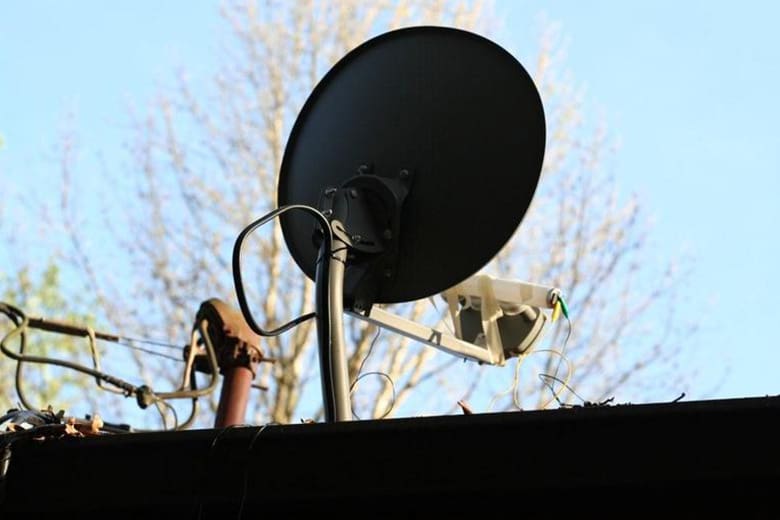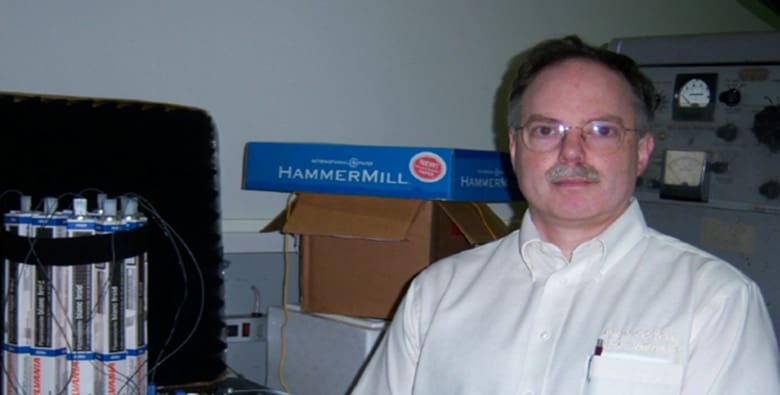Antenna Use Cases
Applications
Introduction
Unlike metal antennas, Gaseous Plasma Antennas can be turned on and off. When turned on, Gaseous Plasma Antennas are fully functional RF devices. However, when turned off, they neither emit nor receive RF signals, and they can be invisible to radar, making them electronically undetectable. This feature improves security over their metal counterparts and makes Gaseous Plasma Antennas ideal for stealth applications.
Gaseous Plasma Antennas can be developed using conventional materials and manufacturing techniques similar to those used to manufacture fluorescent lighting, neon lighting, and other existing industrial products. The gases and materials contemplated for use in GPAs and PSAs are inert, and/or they are prevalent in the atmosphere. The initial introduction and ongoing manufacturing costs of GPAs will be relatively low. The technology will not initially introduce new substances that might require exceptional environmental certification or pose unforeseen technical manufacturing hurdles with an unfamiliar manufacturing process (on-the-fly).
Haleakala Research and Development, Inc.(HRDI) plans to partner to see the manufacture of multi-function, wideband antennas capable of transmitting signals.
One of HRDI’s aim is to leverage the plasma antennas in a broad and deep inter-disciplinary systems research effort, thereby demonstrating the feasibility, architectural integrity, and commercial feasibility of ultra-high-speed wireless networks to the “Last-Mile” (i.e. high bandwidth access to homes and small offices). HRDI could partner with other companies, national laboratories and universities to develop the architecture and open standards to allow for seamless migration from current low-to-medium speed wireless access network deployments.
HRDI could establish collaborative relationships to develop the architecture and open standards to allow for seamless migration from existing wireless access network deployments. Interrelated technology developments make this solution cost effective and a substantial improvement over current wireless systems. A multi-band reception system would reduce the need to build, transport, and maintain multiple receiving dishes in the field. The envisioned framework allows the introduction of traffic engineering capabilities (multi-path, traffic trunking and splitting) in connectionless IP networks with only partial/incremental upgrades.
Multimedia, VoIP, and Virtual Presence Applications: High aggregate bandwidth to the home is expected to result in a flood of new multimedia applications, primarily targeted around entertainment, telephone, telecommuting/tele-presence and wireless videoconferencing. The variable bandwidths of the last-hop access and delays in the multi-hop, multi-path routing pose industry challenges. HRDI’s team will continue to improve upon and develop products that can handle a range of synchronous and bandwidth-intensive multimedia applications.
As opportunities arise and mass production capability is perfected, HRDI will address other target markets including home and small office computing, media and entertainment, and home and portable electronics.
HRDI will later engage in studies of advanced materials that can be used as enclosures for GPAs and for which there appears to be substantial market potential. These will include special glasses, plastics, ceramics, and nanophase materials.
1. Smart TV plasma antennas to meet the change over into digital airwaves.
Dave Wilson, senior director of Consumer Electronics Association, saw our smart plasma antenna prototype work at the Austin antenna conference in September and believes we should have a market in the smart TV antenna market. We have looked at other smart antennas that address this area and we are convinced that ours is superior.
GE and RCA have put commercial civilian smart antennas on the market recently to address the 2009 changeover to digital airwaves. Our smart plasma antenna capabilities are superior in many was to the other smart TV antennas. Our smart plasma antenna can steer the antenna beam 360 degrees and the competition cannot. Our smart plasma antenna has a reconfigurable beamwidth. The competition does not. Our smart plasma antenna has higher bandwidth than the bandwidths of the competition. We give some information on the smart TV antennas from GE and Audiovox taken from their websites in the competition section below.
2. Smart plasma antennas as RFID readers
We have determined advantages that the smart plasma antenna can have over other RFID antennas based on smart phased array technology. These advantages that our smart plasma antenna can have over smart phased array antennas for RFID applications are:
A.) Our smart plasma antenna has the ability to steer (scan) antenna beams 360 degrees in milliseconds. We are aware of how to do it in microseconds. Competition cannot steer 360 degrees.
B.) Our smart plasma antenna beam can change direction without scanning in milliseconds. For example: from 0 to 180 degrees in milliseconds.
C.) Reconfigurable beamwidth. Competition cannot do this.
D.) Broader bandwidth than phased arrays by using broadband omnidirectional antenna in the center such as a biconical antenna. In addition, bandwidth can be reconfigured for use in US , Europe, etc. Competition cannot do this.
E.) Less costs than phased array RFID antennas. We only need one antenna and we do not need phase shifters. Competition uses phased array RFID readers.
F.) Our smart plasma antenna is more compact and less cumbersome than phased array RFID antennas.
G.) Our smart plasma antenna is light weight: weighs about 10 pounds. Competition uses phased array RFID readers which are much heavier and larger.
H.) Our smart plasma antenna can read vertical horizontal, and circular polarizations by reconfiguration of plasma antennas. Competition cannot do this.
3. Superior fixed satellite plasma antennas and satellite plasma antennas for RVs and yachts.
We are working on some initial experiments that may lead to an agreement with a company to develop smart plasma satellite antennas in the Ku and Ka bands.
4. WIMAX
The current markets for smart antennas for WIMAX is given in appendix . West, Kirsten; Principal Analyst, West Technology Research, “Smart Antenna Technology Review”, Antenna Systems & Technology, 2008 Resource Guide, pages 4 and 6.
5. 3G and 4G
The current markets for smart antennas for 3 G is given in appendix . West, Kirsten; Principal Analyst, West Technology Research, “Smart Antenna Technology Review”, Antenna Systems & Technology, 2008 Resource Guide, pages 4 and 6.
6. Wi-Fi
The current markets for smart antennas for Wi-Fi is given in appendix . West, Kirsten; Principal Analyst, West Technology Research, “Smart Antenna Technology Review”, Antenna Systems & Technology, 2008 Resource Guide, pages 4 and 6.
7. Smart plasma antennas to replace omni directional wireless access point antennas in big box stores such as Walmart, CVS, Home Depot, Lowes, Best Buy, etc.
These stores utilized sometime 6-30 Omni directional wireless access point also known as “AP’s”. The AP’s are extremely inefficient and have a high total cost of ownership with data security standard such as PCI compliance mandating encryption key rotation every 6 months. Major tier one retails utilize wireless infrastructure to drive business initiatives such as markdown, inventory, and price lookup. The big box stores such as Walmart, CVS, Home Depot, Lowes, Best Buy etc. utilized sometime 6-30 Omni directional wireless access point also known as “AP’s”. The AP’s are extremely inefficient and have a high total cost of ownership with data security standard such as PCI compliance mandating encryption key rotation every 6 months.
What if major retailers had another wireless solution besides 6+ Omni directional wireless AP’s? Why wouldn’t they utilize a technology that would drive their TCO lower over time? Why wouldn’t they want to only maintain 1-2 devices at stores?
The smart plasma antenna could fit the technology needs of this extremely large customer base. By leveraging 1 to 2 plasma antenna’s at larger than 40,000 sq ft buildings plasma antenna technology would reduce cost s for retailers, warehouses, distribution centers, convention centers, arenas, airports, and malls.
We are currently doing experiments and testing of plasma antennas as satellite antennas. We hope that in a few months we can show that we can replace the DIRECT TV antenna systems with a superior plasma antenna system. Below is a photo of one of our plasma antennas for satellite communications experiments that establishes that with the power and pulsing technology that we currently have, the plasma antenna can be formed into a dish and replace the metal dish with higher data rate advantages and shape advantages. We removed one of the plasma tubes in our smart plasma antenna and tested it in this satellite system. The plasma antenna was pulsed for low power ionization just as it is in the smart plasma antenna. We can also make the plasma dish antenna more aesthetical, flat, or conformal instead of dish shaped and we have some interesting physics to support that.

In this photograph, the plasma antenna was placed at the focal point where the horn antenna is in the DIRECT TV satellite dish -horn system.

The GPA technology has already been reduced to practice with the development of a successful working prototype. Therefore, HRDI will immediately focus on commercialization of the GPA technology while completing the development of the PSA technology. HRDI will target its marketing efforts on the US Department of Defense, the US Homeland Security Agency, telecommunications companies, conventional antenna manufacturers, and manufacturers of consumer electronics.
